Thursday, December 26, 2024. Annette’s News Roundup.
I promised a hiatus of the Roundup during the holidays but the holidays seemed to suggest there be more cheer.
A continuation of holiday spirit and stories.
From the President.
The Biden-Harris Administration wishes you and your loved ones a Happy Hanukkah! pic.twitter.com/yFFtIYszAa
— The White House (@WhiteHouse) December 25, 2024
May our nation be blessed with the peace and light of the holiday season.
— President Biden (@POTUS) December 24, 2024
Merry Christmas and Happy Holidays. pic.twitter.com/C1gBvivNKU
⚡️President Biden made Christmas calls to the military.⚡️ pic.twitter.com/dXQnGjuDUH
— Susan ✨⚖️✨ ☮️ 💟 (@SusanInDelaware) December 25, 2024
From the Vice President.
From our family to yours, Merry Christmas. We wish you a holiday full of love, peace, and light. pic.twitter.com/BfFrY1Zhbb
— Vice President Kamala Harris (@VP) December 25, 2024
From a deranged man.

From Kyiv.
Carols from Kyiv metro station
— Yaroslava Antipina (@strategywoman) December 25, 2024
Golden Gate.
I saw these girls a few minutes ago. pic.twitter.com/f5yF6bCFxt
From the Pope.
Pope Francis in his traditional Christmas message on Wednesday urged “all people of all nations” to find courage during this Holy Year “to silence the sounds of arms and overcome divisions." https://t.co/PtbQl0t1a8
— NBC News (@NBCNews) December 25, 2024
From an Iman.
Happy Hanukkah to all our Jewish cousins! May this special occasion bring warmth, joy, and blessings to your homes and hearts. Wishing you and your loved ones a joyous and meaningful Hanukkah filled with love and peace.
— Imam of Peace (@Imamofpeace) December 25, 2024
Imam Tawhidi
Abu Dhabi, UAE pic.twitter.com/dIlsiMCJQO
Touch to watch and listen.
You’re the US Marines band at the White House and Mavis Staples 👑 walks into the room so you start playing "I’ll Take You There" and this happens👇
— Wu Tang is for the Children (@WUTangKids) December 24, 2024
pic.twitter.com/oMzqdWj265
A story that can only be told at this season, so . . .
How ‘Rudolph the Red-Nosed Reindeer’ (and Its Writer) Went Down in History
Johnny Marks wrote the beloved holiday song, as well as “Rockin’ Around the Christmas Tree.” But he felt pigeonholed by the success of “Rudolph.
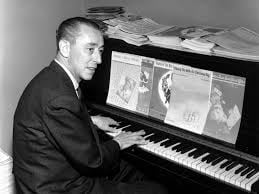
The songwriter Johnny Marks at the piano in 1956. He wrote so many successful holiday songs, he became known as “Mr. Christmas.”
There were “years of heartbreak,” the songwriter Johnny Marks once recalled of his start in the music business in 1935. He eventually found some modest success collaborating on a No. 1 hit for the Ink Spots, “Address Unknown,” and songs made popular by Bing Crosby and Glenn Miller. It was just enough renown for Billboard magazine to briefly note his decision to pause to volunteer for World War II in the spring of 1942, when he enlisted as a U.S. Army private.
“I was getting a little attention but with the war coming on I had to put it aside,” he told a radio broadcaster decades later. “And then 1949 and ‘Rudy’ came into my life.”
“Rudolph the Red-Nosed Reindeer” was recorded 75 years ago by the country-music singer and movie star Gene Autry, and quickly rocketed off on a flight that’s yet to land. It spent the last week of December 1949 as Billboard’s best-selling pop single and children’s record, and fourth best-selling country and western record; it was that week’s third most-played song on the radio and the fourth among jukeboxes, according to the magazine.
The next year, it was still dominant — this time against more than a dozen competing covers. By 1985, when Marks died at 75, there reportedly were some 500 versions that tallied 150 million records sold. Marks had sold as many as eight million copies of the sheet music and 25 million copies of orchestral and choral arrangements.
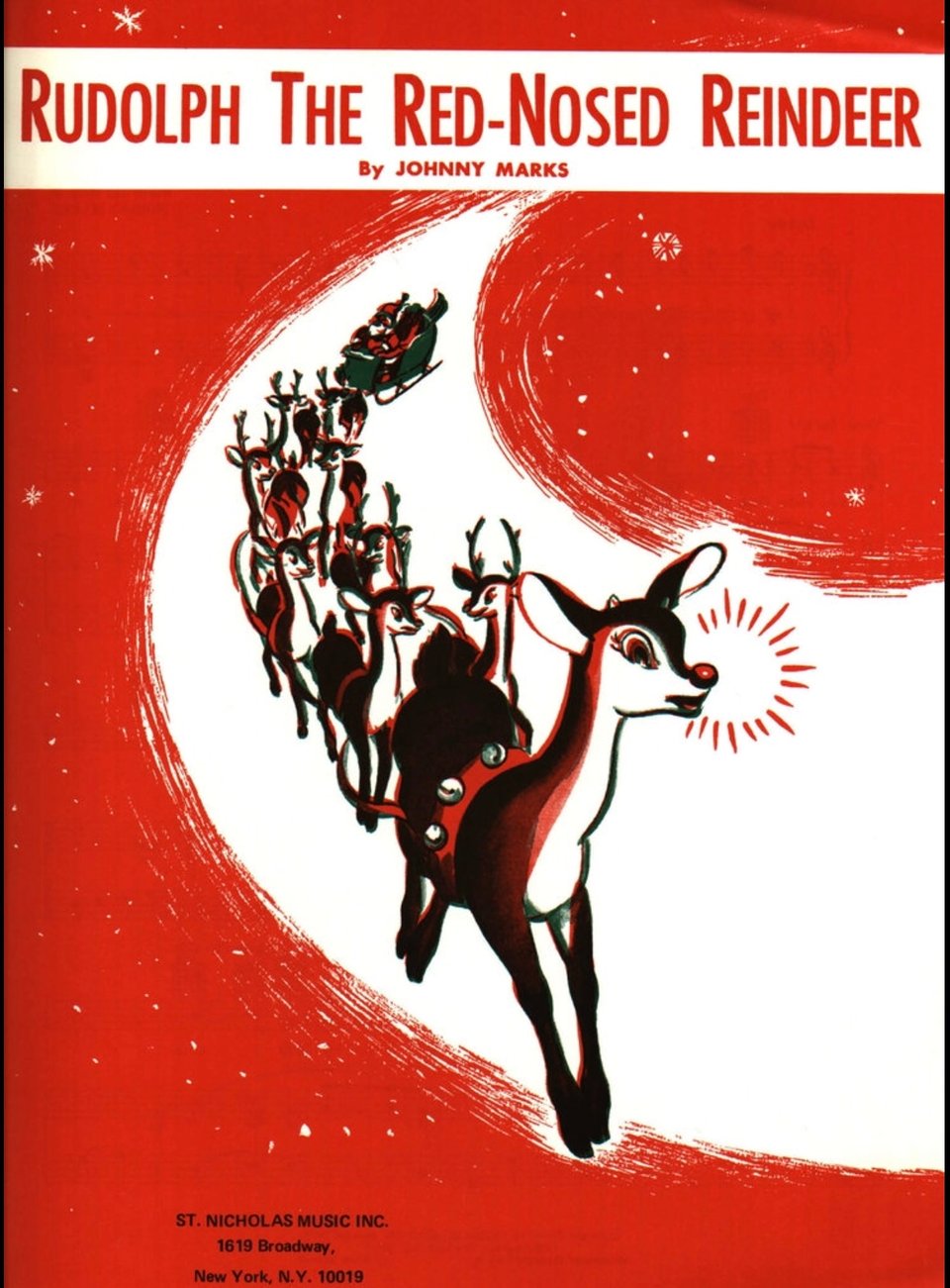
Sheet music for Marks’s “Rudolph the Red-Nosed Reindeer.”
“If I told you today how much money I made on Rudolph,” the songwriter told The Associated Press in 1958, “my kids would be kidnapped tomorrow.”
Stars including Ella Fitzgerald, Dolly Parton, Ray Charles, the Temptations, DMX and the Chipmunks have stretched the song in all directions. It has been bebopped, soul-infused, tranquilized, saddled with twang, rocked, rapped and made to cha-cha.
In 2018, Autry’s “Rudolph” began an annual emergence on the Billboard Hot 100 singles chart (which didn’t exist until 1958). And this spring, the song was one of 25 added to the Library of Congress’s National Recording Registry, a collection the library deems “some of the defining sounds of history and culture.”
If Marks’s “Rudolph” is having a cultural moment at 75, then the songwriter is even more so: He also wrote the Burl Ives holiday standard “Holly Jolly Christmas” and “Rockin’ Around the Christmas Tree,” which in 2023 — 65 years after it was recorded by Brenda Lee in 1958 — finally reached No. 1 and has been a reliable contender before and since. But for Marks — who published more than 150 other songs and was referred to as the “Mr. Christmas of the music world” — it was “Rudy” that would be his musical shadow in life and beyond.
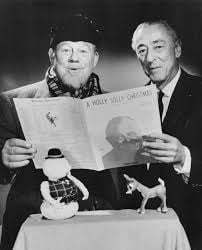
Burl Ives, who famously performed Marks’s “A Holly Jolly Christmas,” and the songwriter.
Reporters seemed to relish the job of describing Marks during his later years: “suave and serene,” one wrote; another described “an elegantly garbed man with a distinctive beard, mustache and silver hair.” In notebooks or paper kept handy, he scribbled titles for songs that had yet to be written.
“He was just a wonderful, precious person; I don’t think he ever really knew how talented he was,” Brenda Lee said in a phone call this month.
She was 13 when she recorded “Rockin’ Around the Christmas Tree” and they remained friends for the rest of his life. “We just had some kind of a connection, personally,” she said. “We might not talk for a few months, and all of the sudden the phone would ring and it’d be Johnny.”
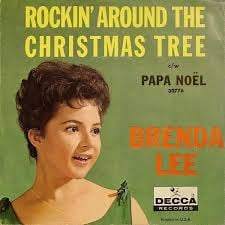
“I don’t think he ever really knew how talented he was,” Brenda Lee said.
Milt Gabler, the influential music producer and Commodore records founder who died in 2001, recalled in a written eulogy that Marks had been a “gentle,” appreciative and private person who “never rested on his laurels. It was almost like maybe that most wondrous of holidays was going to vanish from the face of the earth.”
Marks was born in 1909 in Mount Vernon, N.Y., and began writing songs at age 13. He graduated from Colgate University in 1931, and within a few years began composing full-time, despite the disapproval of his parents. “It wasn’t a real profession,” he told The A.P. in 1977.
Milt Gabler, the influential music producer and Commodore records founder who died in 2001, recalled in a written eulogy that Marks had been a “gentle,” appreciative and private person who “never rested on his laurels. It was almost like maybe that most wondrous of holidays was going to vanish from the face of the earth.”
Marks was born in 1909 in Mount Vernon, N.Y., and began writing songs at age 13. He graduated from Colgate University in 1931, and within a few years began composing full-time, despite the disapproval of his parents. “It wasn’t a real profession,” he told The A.P. in 1977.
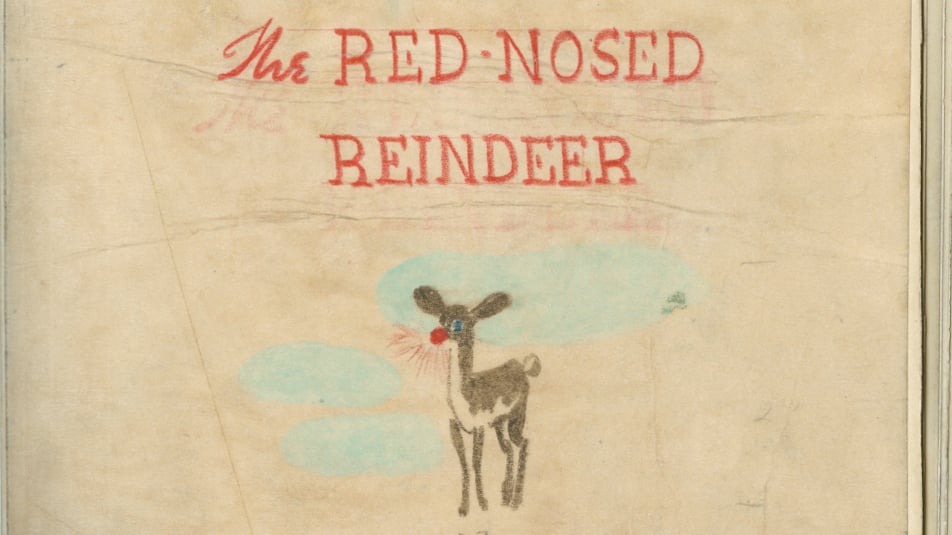
The “Rudolph” book that inspired the song.
“May’s Rudolph seemed tailor-made for these late Depression years, a children’s fairy tale that captured the exuberance of the American spirit,” Ronald D. Lankford Jr. wrote in the thoroughly researched book “Rudolph the Red-Nosed Reindeer: An American Hero.”
It was a colossal success. Montgomery Ward distributed around 2.4 million copies that year — a number, Lankford wrote, that “dwarfed the printing of any children’s book by a publisher at that time.” The store reintroduced the “Rudolph” giveaway in 1946, handing out another 3.5 million copies.
A commercial version was published in 1947, and a Rudolph cartoon made by Max Fleischer hit theaters in 1948. All this — plus an exploding population of U.S. children and a growing awareness of their buying potential — might have seemed like a gilded launchpad for a song. Rudolph “had one advantage that even Mickey Mouse lacked: He was associated with Santa Claus and Christmas,” Lankford wrote. But that also meant for most of the year “he disappeared, and no one knew what the next holiday would hold.”
Marks told The A.P. in 1956 that it took “only a week to write the song — or a week plus 20 years, if you count the time it took me to learn what to throw away.” And he took the expensive step of creating a publishing company, St. Nicholas Music Inc., to maintain control of the song. (Today, the company is run by one of his sons, Michael, who declined to be interviewed.)
Yet Marks had trouble picking up momentum. The country crossover star Eddy Arnold recorded the song, but it was held up by his label, Marks told The A.P. in 1958. Efforts to convince Crosby and Perry Como stalled, as well.
He’d sent the demo to “at least 10 singers,” according to Lankford, including an initially unmoved Autry, who had a hit in 1947 with “Here Comes Santa Claus.” Persuaded by his camp, Autry cut the song in July 1949, and it was released in September.
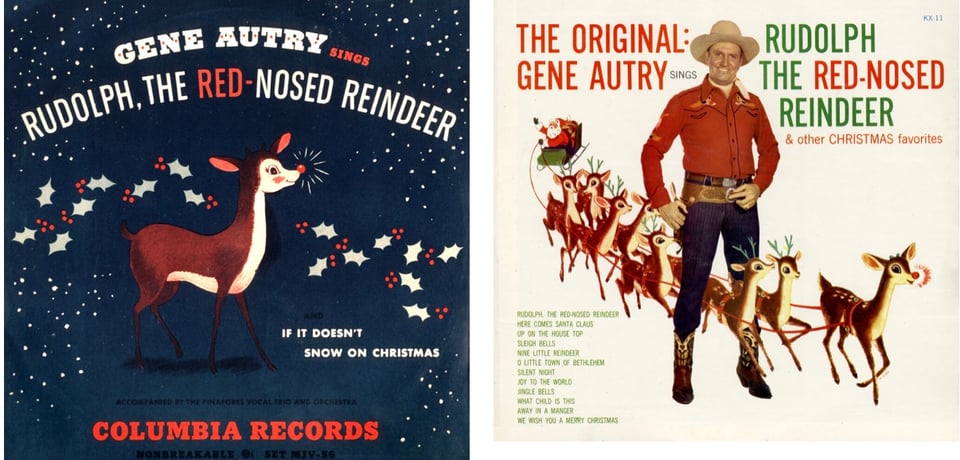
Autry Qualified Interest Trust and the Autry Foundation
“What I sent you in 1949 were ink dots on a piece of paper,” Marks later told Autry, according to the Autry biography “Public Cowboy No. 1,” by Holly George-Warren. “You had to translate this into a sound, lyrically and musically, that people would like. How many great songs have been lost because of the wrong rendition?”
Joe Bennett, a forensic musicologist who teaches at Berklee College of Music, said that in commercial terms, “Rudolph” is “the Pixar movie of its time”: “Family-friendly, utterly uncontroversial in any way,” he added in a video interview, “and a universal tale of someone triumphing over adversity. What is not to like?”
Bennett said there are other clues to the song’s popularity and endurance: It’s a relief from the genre’s usual themes of home, nostalgia and romantic love; its tempo is faster than some Christmas songs of that era, and even the average pop song of the past 60 years; the lyrics are so concise that the story is heard twice and the melody three times in a single play; it’s easy for kids to sing, since the tune travels less than an octave; and the song’s “natural cheerfulness is pretty indestructible across genres.”
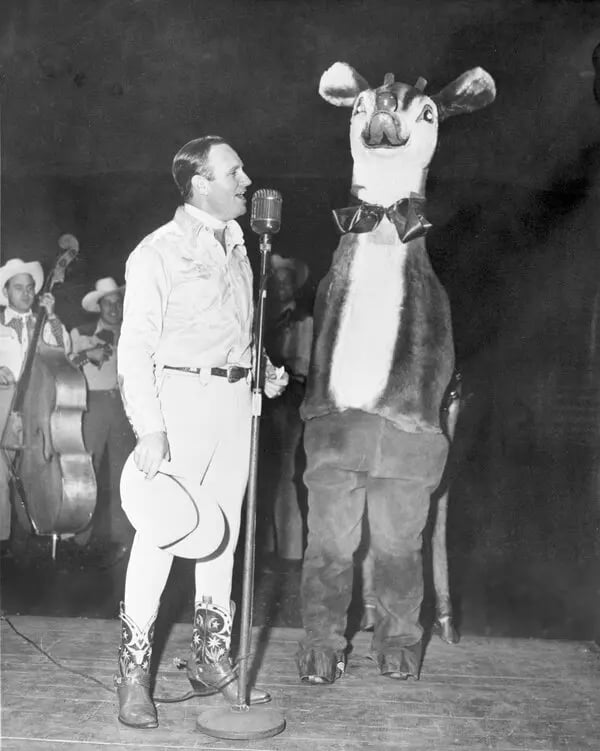
Gene Autry on tour with “Rudolph, the Red-Nosed Reindeer
Daniel Tashian, a Grammy-winning songwriter and producer, compared the song to a “couture garment,” so expertly stitched that the underlying handiwork is invisible. But for him, it’s more than mechanics: It’s a “rebel’s anthem.”
“I was just a little half-Armenian kid and I never felt like I fit in with all the other kids in the school,” Tashian, 50, said in a phone interview. “I saw myself as Rudolph.”
For Marks, the song’s runaway popularity also had a flip side.
At times, in interviews during his later years, he seemed weary of — though ever grateful for — the tune’s ability to find him in Tokyo or on safari in central Africa, and for it to eclipse the rest of his work.
“Do I mind being associated with ‘Rudy?’ It’s the way it is, that’s all,” Marks told the radio broadcaster Michael Whorf in a 1976 interview that appears in Whorf’s oral history collection, “American Popular Song Composers.” “But sometimes I think of the actor who has been typecast, and like them, I too can do other things.”
At the time, Marks felt his best song was “I Heard the Bells on Christmas Day,” an intense, stirring melody set to words from Henry Wadsworth Longfellow’s 1864 poem, “Christmas Bells.” It was a popular song for Crosby, and later recorded by Frank Sinatra, Harry Belafonte, Plácido Domingo and others.
Nevertheless, it was “Rudolph” that would continue to come around once a year, and Marks told Whorf that each year he called Autry to thank him for its success.
“Something very special happened for me,” Marks said. “I wrote a song that circled the globe.” (New York Times)
Happy Boxing Day and the start of Kwanzaa.
See you soon.